
If your perfect family vacation spot includes beautiful long stretches of beach, mini golf courses and kite and candy shops OBX is filled with some of the best. This collection of seashore villages offers distinctive personalities to take in. You will also find this region of North Carolina filled with rich stories to engage in the past. We experienced the history of the Outer Banks through three diverse National Parks Service sites.
Our first was our stay at a beach campsite nestled in the dunes within the Cape Hatteras National Seashore. Visitors typically drive their cars on to the sand although we didn’t have to since our site was a short walk away. The weather was rainy and windy, and the waves were rough, so our time was spent walking and exploring the beach.
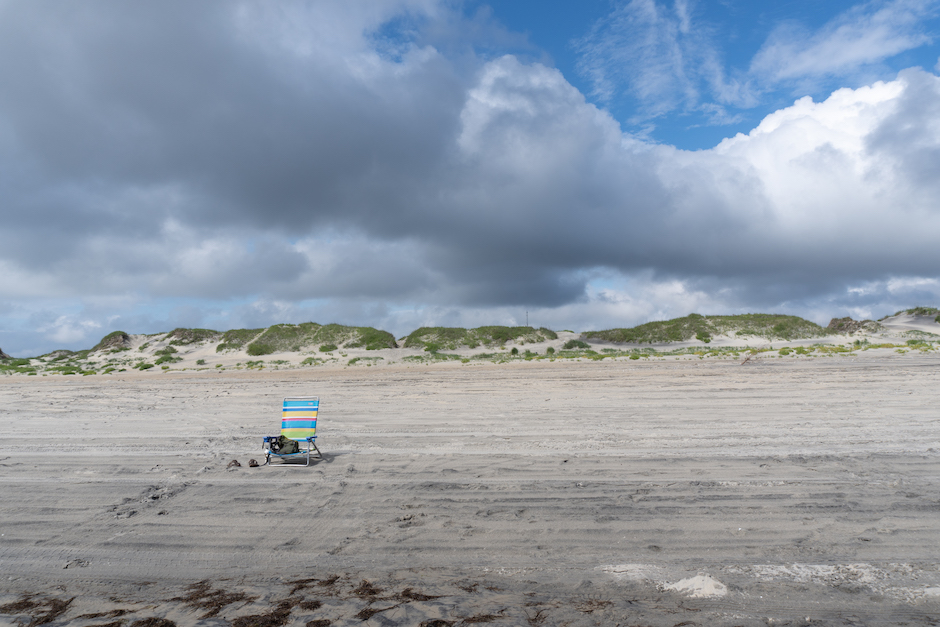
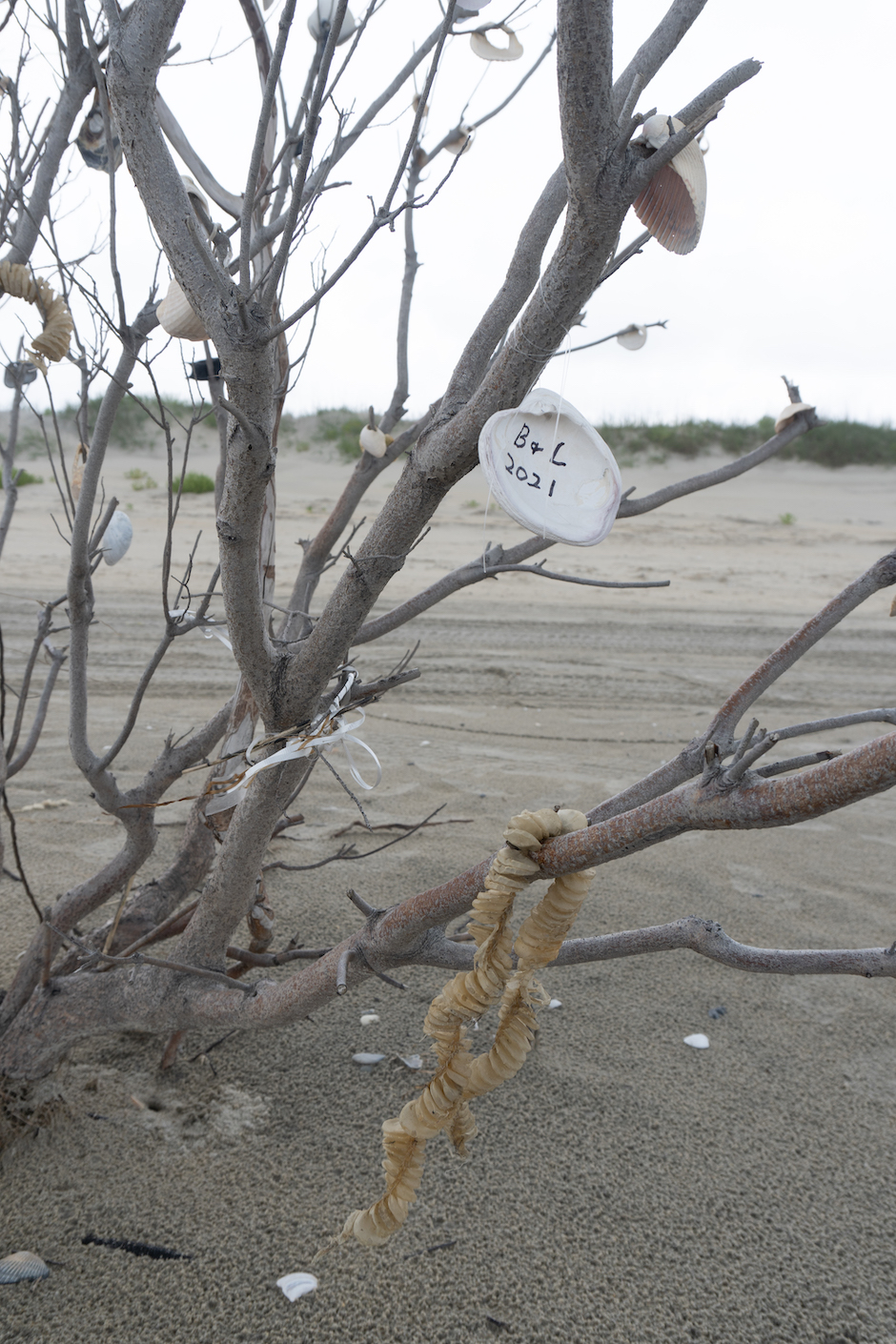

Within the National Seashore on the Roanoke Sound is the Bodie Island Lighthouse one of the few remaining brick lighthouses in the USA. Each of the lighthouses along the coastline is painted in a distinct pattern so by day sailors could identify their location. At night each lighthouse flashes a different pattern of light allowing the sailors to navigate in the dark. This may sound like a good system although this seventy mile stretch of coast is known as the Graveyard of the Atlantic for all of the ships that have been lost here. A walk up 214 steps inside the lighthouse brought us to the original Fresnel lens from 1872 and incredible views of the sound.
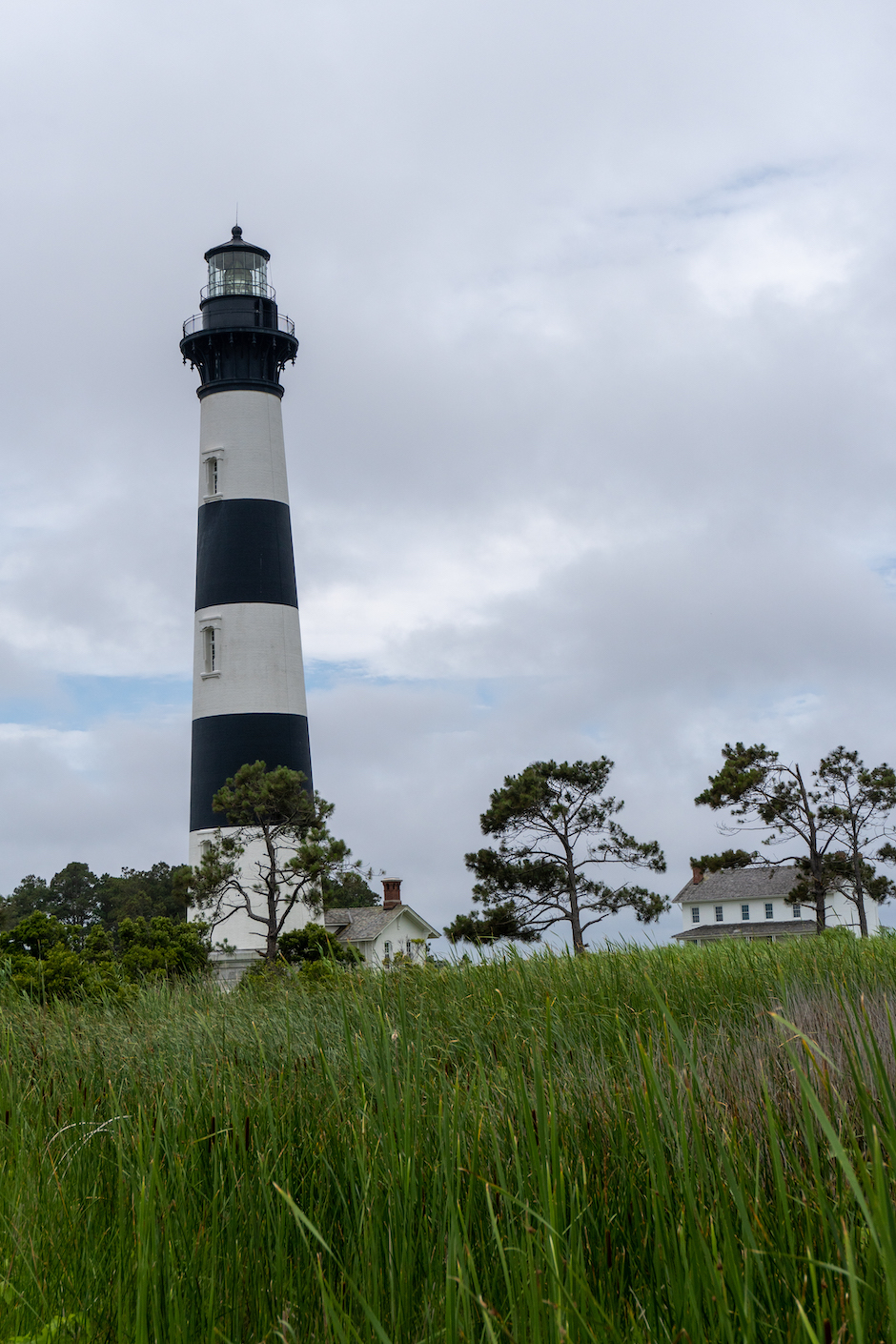
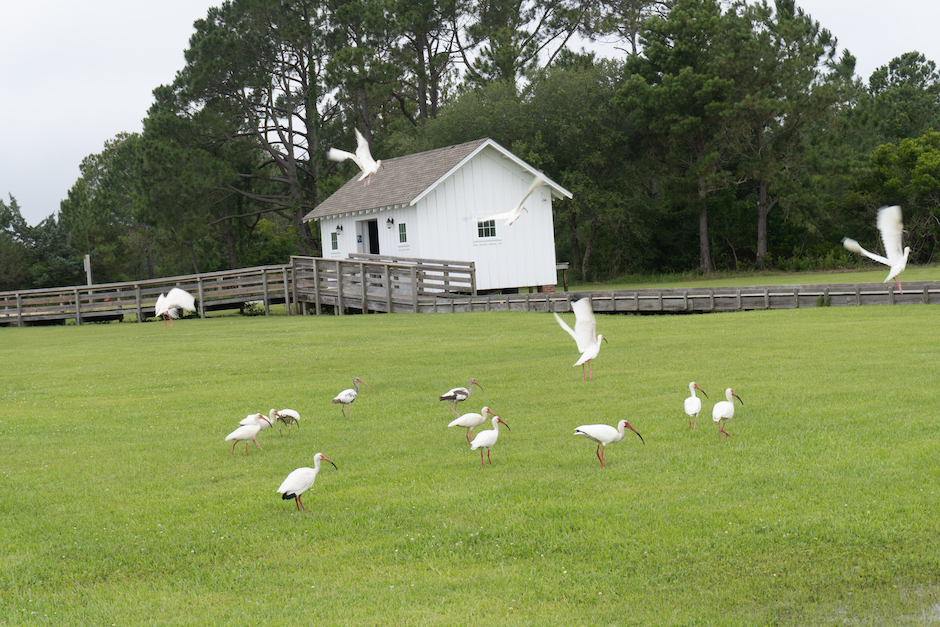
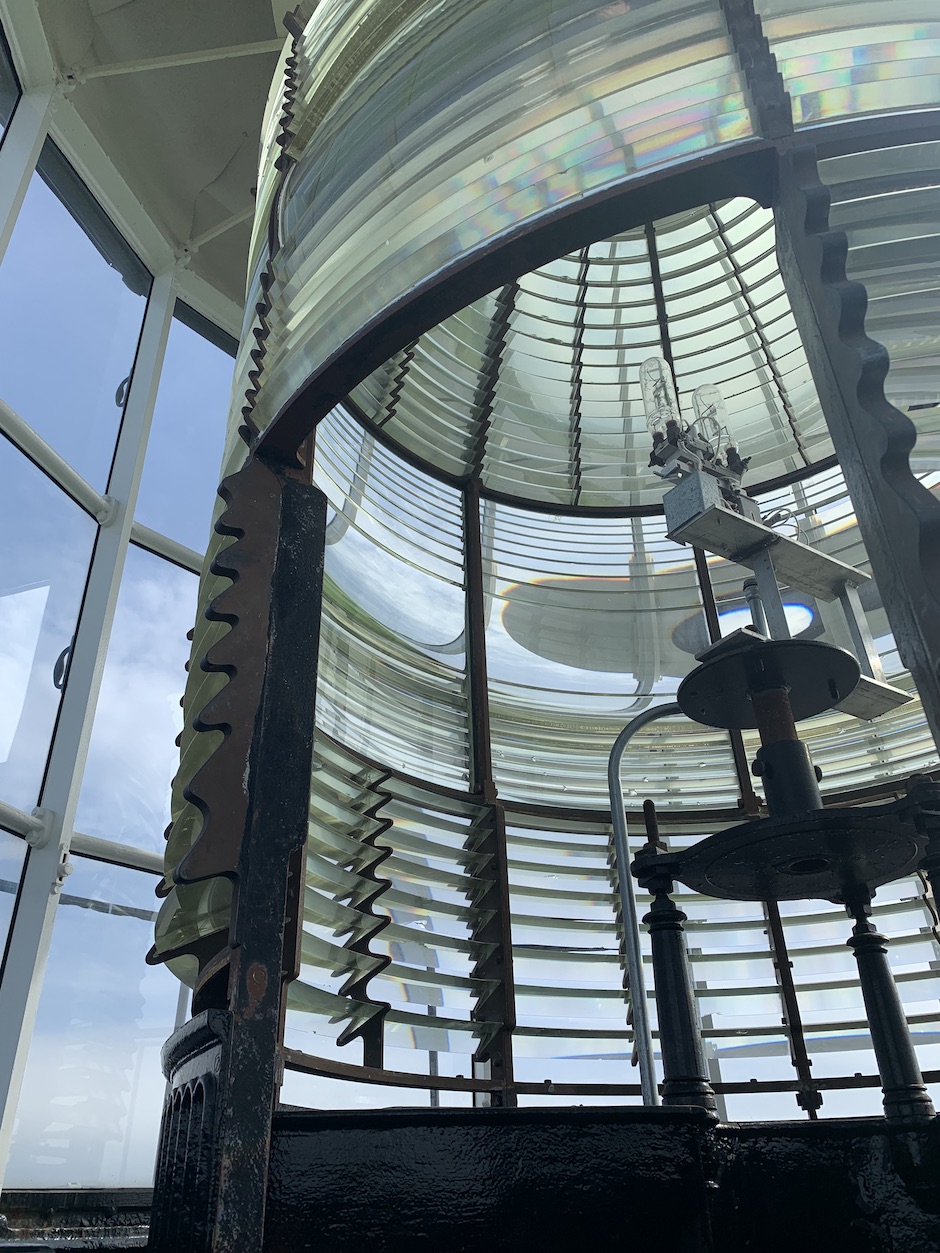

Our next stop was the Wright Brothers National Memorial in Kill Devil Hills a short drive from the campground. Yes, this used to be Kitty Hawk but now that is the next town over but the location of the first flights hasn’t changed and is clearly marked. Orville and Wilber Wright chose to leave Dayton, Ohio and set up shop in this location to test their gliders and airplanes for its natural features. Wind for lift, hills for takeoff and sand for landing. An unpopulated area at that time this region offered a community of helpers but also privacy from reporters so they could keep their experiments a secret. We were most impressed with their impeccable engineering. They didn’t just build the airplanes but also the tools, testing systems and their own wind tunnel. The brothers focused on pilot control systems while other early competitive aviators seeking to be the first to fly worked on more powerful engines. After much experimentation the first of four airplane flights took place on December 17, 1903. The first was only 12 seconds but the last flight was 59 seconds and traveled a distance of 852 feet.
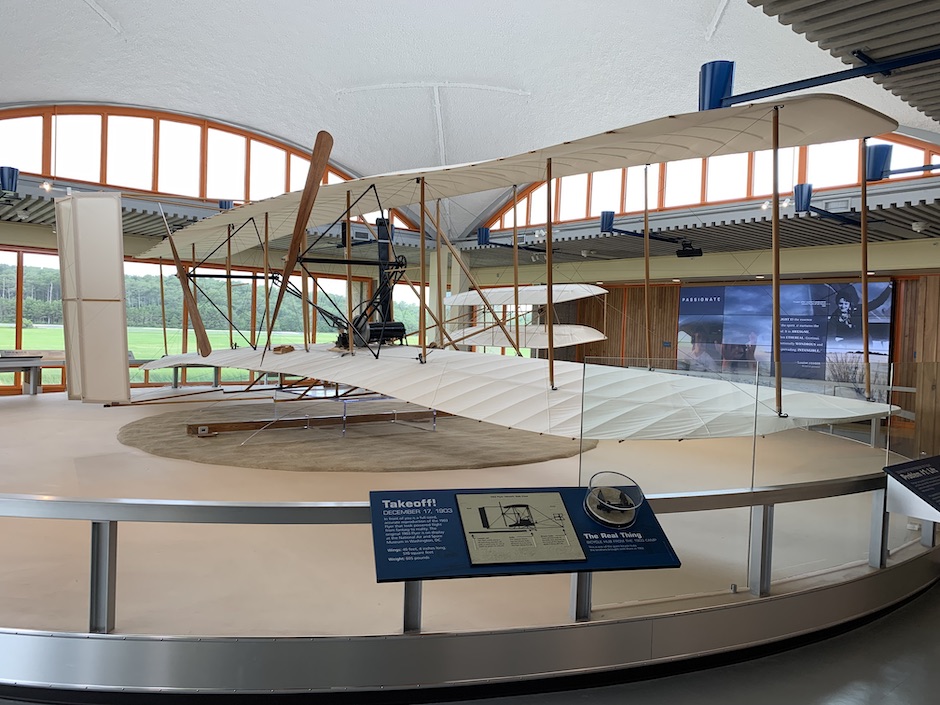

While in the area we also had a chance to visit the National Parks Service Fort Raleigh Historic Site to learn about the first permanent English settlement of over 100 people that vanished from Roanoke Island in 1587. This unexplained disappearance is known as the Lost Colony of Roanoke. When their leader John White left to go back to England for supplies and later returned the only evidence left of them was the word “Croatoan” the name of one of the tribes carved into a tree. There are a few theories about what happened to them. One is that they did not survive due to starvation or native attacks although there is no archeological evidence of their remains. An alternative is that they tried to return to England by sea and were lost on the journey. One more is that they assimilated with the native population. Even today with DNA testing and advanced archeological practices their story remains unknown.
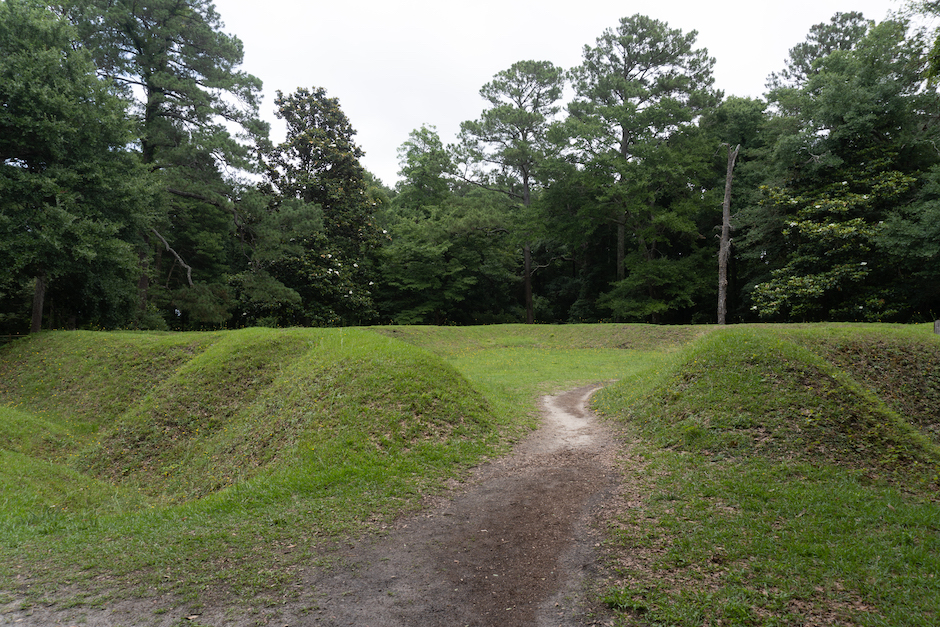

This beautiful area is filled with so much to do and an amazing history that left us wanting to return to explore OBX even more next time.